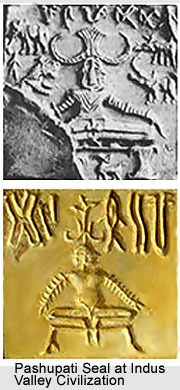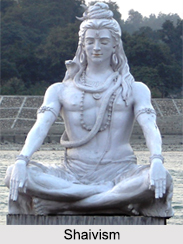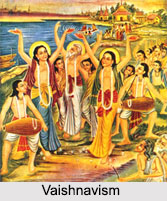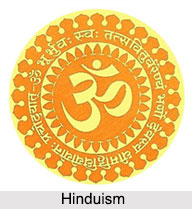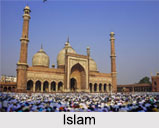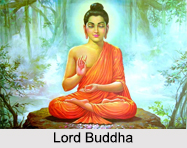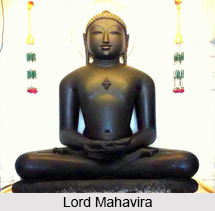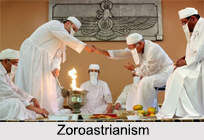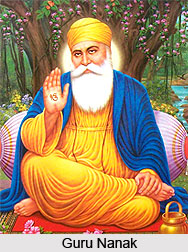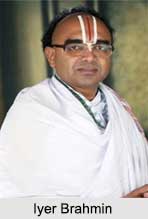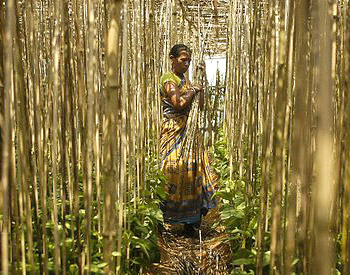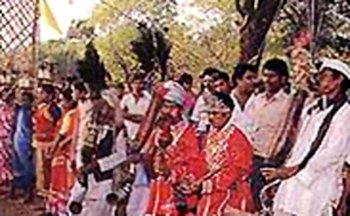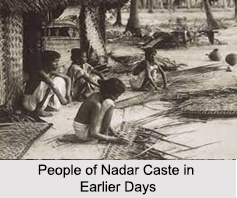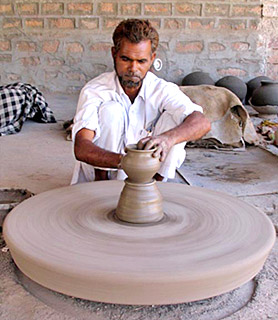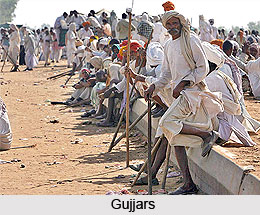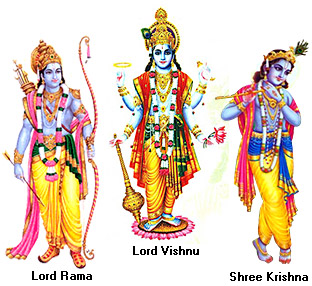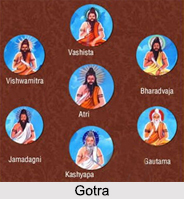Introduction
Gujjar Population of India is near about 5.3 crores approximately. Overall, they form 10 per cent of India’s population. The name for the state of Gujarat has derived from "Gurjar," the community. The Gurjars were classified as a Scheduled Tribe in Himachal Pradesh and Jammu and Kashmir, and as Other Backward Class in Rajasthan and Madhya Pradesh. Over the decades, this community came to known as “Gujjars.” Gujjars were originally engaged in agriculture, pastoral and nomadic activities for livelihood. They lived in heterogeneous groups.
Origin of Gujjars in India
The Gujjars have held a remarkably diverse role throughout history. While some were associated with powerful kingdoms, others lived as nomadic communities without permanent lands. The defining chapter in Gurjar or Gujjar identity is often linked to the rise of the Gurjara kingdom in what is now Rajasthan and Gujarat during the Middle Ages. Historical accounts suggest that the Gujjars migrated from the region known as Gurjaratra to various parts of the Indian subcontinent, leaving a distinct cultural and political footprint.
By the 10th century CE, the prominence of the Gurjaras in mainstream history began to wane. In the centuries that followed, records mention several Gurjar chieftains and warrior leaders who, though influential, ruled smaller territories compared to their forebears. During the Mughal era, the terms ‘Gujar’ or ‘Gujjar’ were widely used.
For many centuries before British rule, the regions now known as Gujarat and Rajasthan were referred to as “Gurjaradesa” and “Gurjaratra”, respectively. Likewise, the Saharanpur district in present-day Uttar Pradesh was once known as “Gurjargadh”, named for the numerous Gurjar zamindars who lived and ruled there.
Interestingly, historians have different opinions of their
origin and their coming to India. Some historians are of the view that they
were the inhabitants of India long ago while others say that they had migrated
from Central Asia. It is also said that probably they might have settled in the
Indian green territory during 5th or 6th century AD. According to the
historians who take them as aborigines of India, the three sects of Kshatriyas
- Suraj Vanshi, Chandra Vanshi and Yadav Vanshi, had amalgamated with Gujjars
after the war Mahabharata. And prior to the Mahabharata war,
Kshatriyas were the sole rulers but their power and influence declined
considerably after the war.
Migration of Gujjars to India
Gujjars migrated to India in 476 AD and were quickly assimilated into the local population as Kshatriyas. According to the Varna or caste system in India, the Gurjars or Gujjars traditionally belonged to the Kshatriya caste or the warrior class. They formerly ruled the Gurjara-Pratihara Kingdom, which included much of northern India during the 8th and 9th centuries. They are believed to have originated from what is now Georgia. Gujarat is said to be named after them as they settled in this state in the 6th century AD. But very recently, the Gujjar community in India were in arms for their inclusion in the Scheduled Tribe list in Rajasthan. It was nothing short of an uprising that left behind a huge trail of corpses, damaged public property and huge loss of business.
The people belonging to Gurjar community are characterized by their strong and large built. They also have a very good self-esteem and are proud people. Gujjars in modern times possess both the desire and ability to rule the world. Gujjar community had produced several great leaders like Vijay Singh Pathik, Sardar Vallabhbhai Patel, Rajesh Pilot and many more.
Gujjar Population in Different States of India
In India, the semi-nomadic Gujjar populations are found mainly in the states of Gujarat, Jammu and Kashmir, Himachal Pradesh, western Uttar Pradesh, northern Madhya Pradesh, Rajasthan, Uttarakhand, Delhi, Haryana, Punjab and Maharashtra. They are mostly Muslims, the rest being either Hindus or Sikhs. It is also said that Gujarat is said to be named after them as they settled there in the 6th century AD. There are around 15 lakh Gujjar Muslims in the state of Jammu and Kashmir. Originally Gujjars are thought to be an Aryan tribe that entered India in parts of Gujarat and Rajasthan from the North West. Having been cattle breeders and milkmen, they were usually associated with herdsmen and shepherds. Traditionally, Gujjars are pastoral people with no fixed abode. However, a large number of Gujjars have now settled down in the state of Haryana and have taken to farming and combine agricultural work with animal husbandry.
Gujjar Community of Uttar Pradesh
Western Uttar Pradesh is totally dominated by Gurjars. Before the year 1857, western Uttar Pradesh was called "Mini Gujarat" due to domination of Gurjars as this region was ruled by them. In Uttar Pradesh, the Gurjar populations are mainly found in the western region that is Saharanpur, Muzaffarnagar, Meerut, Moradabad, Bijnor, Ghaziabad, Noida, Bulandshahar and Bareilly. To a fewer extent, they are also found in Agra and Bundelkhand.
Gujjar Community of Punjab
There are many Gurjar villages in
the state of Punjab and most of these Gurjars are Sikhs. The
last names of the Punjabi Gurjars include Kasana, Khepar, Kataria, Chaudhary,
Bjarh, Chauhan, Bhumbla, Chandpuri, Chechi, Meelu, Hans and others. According
to some records, population of Gujjar community is relatively high in the central region of India.
Gujjar Community of Delhi
The Gujjars constitute a significant segment of Delhi’s population, maintaining a blend of their traditional pastoral lifestyle and small-scale farming across areas in and around the city. Predominantly Hindu, the Gujjar community in Delhi follows a largely vegetarian diet centered around milk, dairy products, and wheat as their staple food.
Historically pastoralists and marginal cultivators, many
Gujjar villages in Delhi have undergone rapid urbanization, transforming into
thriving residential and commercial hubs. Within their homes, Gujjars commonly
speak Gujjari while also using Hindi in everyday communication. Despite
increasing modernization, the community continues to uphold long-standing
social traditions, including endogamous marriage practices and patrilineal
inheritance.
Gujjar Community of Gujarat
The state derives its name from ‘Gurjara,’ the land of the Gurjars, who held dominion over the region during the 7th and 8th centuries. Today, the Gurjars or Gujjars are recognized among the Other Backward Classes (OBC) in Gujarat.
Some scholars suggest that the Leva Kunbis, also known as Kambis, a subgroup of the Patidar community, may trace their ancestry to the Gurjars. The Patidars, formerly called Kanbis, are a prominent land-owning and agrarian community native to Gujarat, comprising several sub-castes, most notably the Levas and Kadvas. They remain one of the state’s most influential social groups. However, while a few theories propose Gurjar roots for certain Patidars, others assert that the Patidars are of Kurmi or Kunbi descent which is somewhat similar to Kanbis. Notably, Gurjars are included in the OBC category in Gujarat, whereas Patidars are not.
In North Gujarat, as well as in parts of Western Rajasthan
and Punjab, the Gurjars traditionally worship the goddesses Sitala and Bhavani,
reflecting their enduring cultural and spiritual heritage.
Gujjar Community of Maharashtra
Gujjars in Maharashtra were considered as the
brave people who had always ten to twenty thousand cavaliers in their own army.
History of Gujjar community suggests that the early Maratha party consisted of
five Kshatriya families and they are Yadav, Panwar, Sindey, Gurjar and Maura.
It is said that a community using the surnames ‘Gujjar’ and ‘Gurjarpadhye’ used
to reside in the coastal Konkan region of the state of Maharashtra. They also
lived in Pangre, Hasol, and several other villages in Ratnagiri districts of
Maharashtra. It is estimated that the Gujjar community have been residing in
the Konkan region for near about three centuries. There is no clue how they
settled down in this coastal region. Basically, they are Brahmins and not
Kshatriyas.
According to the local priests, the Gujjars in Maharasthra are fundamentally a
priestly community. ‘Bargujjar’ is considered as one of the main clans among
the Marathas. Pratap Rao Gurjar was the third royal commander-in-chief of the
army of Maratha ruler Chatrapati Shivaji. Moreover, Sidhoji Bargujar was also a
noteworthy admiral in Shivaji’s navy. In 1666 Chhatrapati Shivaji Maharaj was
not arrested in Delhi but was invited to Agra by Mughal Emperor Aurangzeb and
subsequently placed under house arrest there. Additionally, he did not have an
executive council under Mirza Raja Jai Singh during this event; Jai Singh had
facilitated the invitation to the Mughal court, which ultimately became a trap
from which Shivaji later escaped. When Shivaji was arrested at Delhi by the
emperor, Pratap Rao took the field in Maharashtra and protected the country
against aggression.
In 1672 CE, Salher Fort was besieged by the Mughal forces,
when Pratap Rao Gurjar reached the place and defeated the besiegers in an open
fight. He then conquered Surat and Khandesh. He was again sent to Balgan where
Mughal Army was destroyed. He also defeated the Bijapur army at Panhal Khoti.
Agian, Singh Gadh Fort was conquered by another Gurjar commander namely
Kartoji. The Gujjars in Maharashtra were the right hand of Shivaji in his
liberation movement in each fight. Against Afzal Khan, Shaista Khan and Prince
Moazzam they led their armies in the fore-front.
In Maharashtra, the Khandesh region has a sizable population of the Gujjars.
The main sub-castes of the Gujjar community here are Dode Gujjar, Leva Gujjar,
Bargujjar, etc. Moreover, they are also found in several clans of Kshatriya
Dhangar. In the state of Maharasthra, Dode and Dore Gujjars are scheduled as
separate caste and they are included in the state OBC list. Further, there is
another distinct Gujjar caste in Maharashtra that is known as ‘Reve Gujjars’.
They speak Gurjari language.
Gujjar Community of Madhya Pradesh
According to the British records, the Gurjar population in
Central India was around 56,000 in the year 1911. Gujjars in Madhya Pradesh
were mostly concentrated in the Nimar and Hoshangabad regions of the Valleys of Narmada. Most of these
were migrants from the Gwalior region, while some of the members of the Gujjar community in Nimar area were
immigrants from the state of Gujarat. At present the Gujjars in Madhya
Pradesh are classified as Other Backward Classes (OBCs).
Bagelkhand (or Baghelkhand) is a region in the north-eastern part of the state
of Madhya Pradesh in central India. It incorporates the Madhya Pradesh
districts of Rewa, Anuppur, Shadol, Satna, Sidhi and Umaria, and the
neighbouring districts of Sonbhadra in the state of Uttar
Pradesh. The Baghels, after whom this region is named, are a division
of the Solanki Gujjars who once ruled in Gujarat and then moved eastwards in
the 13th century. Vyaghra Dev was the earliest Solanki leader who came to this
region from the state of Gujarat and started his rule. Vyaghra is in fact a
Sanskrit word which in Hindi means “Bagh”, the tiger. The descendants of
Vyaghra Dev are identified as Baghels. The famous Bagelkhand Agency derived its
name from the region.
Bagelkhand Agency was a compilation of princely states during British rule in India. The agency was set up in March 1871. Before the formation of this agency, Bagelkhand was a part of the Bundelkhand agency, with which it had geographical as well as historical connection. From 1871 to 1933, Bagelkhand agency was politically supervised by the Governor-General of India’s agent for Central India. This agent was also the superintendent of the Rewa State and used to reside at Satna or Rewa. The agency comprised of the Rewa state and eleven small states and estates. Some of the important ones were Maihar, Nagod and Sohawal. The other states were Kothi, Jaso, Baraunda, Kamta-Rajaula, Paldeo, Pahra, Taraon, and Bhaisaunda.
The agency covered a total area of 14,323 square miles. In 1901, it had a population of 1,555,024, an 11 per cent decrease from that of the previous decade, owing to the attack of famine. The rainfall was very scarce from 1895 to 1897 resulting in famine in 1897. During the period from 1899 to 1900 there was drought in some sections. After India got its independence in 1947, the princely states that constituted the Bagelkhand Agency were merged with Rewa to form Vindhya Pradesh state, which was in turn fused into the state of Madhya Pradesh on November 1, 1956.
Gujjar Community of Haryana
Gujjars in Haryana are mostly settled in Faridabad and
Panchkula districts and also in the Samalkha segment of Panipat district. The
population of Gujjars in Haryana is relatively large. In this state, most of
the people of the Gujjar community are occupied in farming. Moreover, the
Gujjars in Haryana also has several complicated guidelines for celebrating
marriages and they also have set rules for holding other functions. Here the
Gurjars are also hugely concentrated in Ambala, Kurukshetra,
Yamunanagar,
Karnal, Panipat, Kaithal, Hisar, Gurgaon and
several other cities.
Gujjars of the state of Haryana are considered as simple, thrifty and
industrious people. It is a common fact that the Gujjars are cultivators only
in the plains but in the hills they are more into keeping cattle than following
the plough. Interestingly, the main gotras of the Gujjars found in the
Faridabad district of Haryana include Bhadana (near about 14 villages), Nagar
(almost 20 villages), Baisla (around 10 villages) and Poswal (1 village). The
Bhadana gotra in Faridabad district launched an anti-dowry campaign in the year
2002 for peacefully solemnizing important occasions like marriages. Brigadier
Hem Chan Nagar, who was born in the Tigaon village in Ballabhgarh Tehsil of the
district Faridabad, was the first brigadier among the Gujjar community of
Haryana.
Gujjar Community of Rajasthan
Gujjars in Rajasthan is considered as one of the chief communities. Interestingly, in this state, they are also seen as a vote bank of political interest. The Gujjar community of Rajasthan are largely rural. They are mostly pastoral and their community is called as semi agriculturist whose primary conventional profession is that of selling milk and other milk products. Gurjars in Rajasthan mainly nurture cows, buffalos, goats and also sheep. They lead a very simple life in accord with the nature. All spheres of life of Gujjars in Rajasthan exhibits primitive traits, be it marriage pattern, social organization, culture, economy, medicinal system, religion, customs, traditions, dresses, ornaments, dwellings, food, domestic effects, education, health etc. Their customs and traditions are in crude form. They follow simple pre machine economy. They have unsophisticated rituals and social customs. There are no signs of advancement or impact of modern life in most of the villages inhabited by Gurjars. Their literacy rate is very low.
Gujjar and the Mina community of Rajasthan share most of the physical,
geographical, social and cultural characteristics. The only difference is that
Mina people are distributed in the plain fertile area and they are
traditionally good agriculturalists whereas Gujjars inhabit the hilly and
forested area, cut off from the main stream and thriving mainly on animal
husbandry. The traditional occupation followed by the Gujjars is pastoralism,
which make them even more eligible to be classified as a scheduled tribe. The
cultural traits, customs and traditions and the distinctive lifestyle of
Gujjars of Rajasthan exhibit their social backwardness.
In 2006 and 2007, some Gujjar community members in Rajasthan resorted to
aggressive protests over the matter of reservation. Presently, the Gujjars in
Rajasthan are categorized as Other Backward Classes (OBCs). In September 2006,
the Gujjars in Rajasthan organized violent protests after the ruling party
failed to keep its promise of including this community in the Indian Scheduled Tribes (ST)
category. In May 2007, during violent protests over reservation issue, the
Gurjar community members clashed with the police in Dausa district of
Rajasthan. Subsequently, the Gurjars protested violently, under various groups
including the Gurjar Sangarsh Samiti, Gurjar Mahasabha and the Gurjar Action
Committee. On 5th June, 2007 the Gujjar community rebelled over the desire to
be added to the list of Scheduled tribes of the Government
of India who are basically given preferences in several sectors in
the country like government job selection and also in placement in the schools
that are funded by the States Governments in India. This predilection is
actually given to the reserved categories under a system that is designed for
helping the poor and disadvantaged citizens of the country. However, this
uprising or request of the Gujjars is opposed by the other tribes on the
government list.
In December of the year 2007, the Akhil Bhartiya Gujjar Mahasabha (All-India
Gurjar Council) made it specifically clear that their community would boycott
the ruling party which was in power in the state. Moreover, in early 2000, the
Gurjars in Rajasthan were in headlines for the falling sex ratio and the resulting
polyandry. Thus, in general, Gujjars in Rajasthan are perceived as a group
involved in small theft of cattle, food grains and things of daily life. And
the Gujjars are not traditionally agricultural tribe in this region, so the
little agriculture they do is poorly managed and they yield a below average
crop.
Gujjar Community of Himachal Pradesh
As of 2001, Gujjars in certain regions of Himachal Pradesh were classified as a Scheduled Tribe. The Gujjar community in the state is known for its nomadic and semi-nomadic pastoral lifestyle, with livelihoods largely centered around animal husbandry, particularly buffalo rearing. They are primarily concentrated in the districts of Chamba, Kangra, Sirmaur, Solan, and Bilaspur, where they practice transhumance, migrating seasonally between the plains and the hills in search of grazing pastures.
The community encompasses both Hindu and Muslim Gujjars, though the
majority identify as Muslim. Their contribution to Himachal Pradesh’s dairy
economy is considerable, as they supply a substantial share of the region’s
milk and dairy products. Despite their economic role, the Gurjars continue to
face persistent challenges such as poverty, limited access to basic
infrastructure, and marginalization from broader development initiatives.
Gujjar Community of Uttarakhand
Gujjars in Shamshergarh of Uttarakhand were
known for their extensive bravery and sacrifices. Samther or Shamshergarh is
bounded on the north and east by the Jalaun district of Uttar
Pradesh, on the south by Jhansi and
on the west by the Bhander pargana of Gwalior
state. The name Samther is the corruption of Shamshergarh. The ruler of
Shamshergarh belonged to Khatana sub-caste of the Gujjar community. The native place of the
family was the North West territory in ancient times where Kaid Rai, one of
their ancestors fought against Alexander the Great. Chandrapal, son of Jaipal
Khatana fought against Subuktgin at Kabul in 997 CE. Mohammad Ghaznavi defeated
Jaipal and Anandpal and Lahore became a part of the Ghaznavi rule in 1018 CE.
The Khatana took refuge in Mardan, Awat, Hazara, etc. and Trilochanpal (son of
Anadpal), himself retired to Jammu hills from where he attacked Punjab. Some
Khatana families migrated south of Satluj River and reached up to Malwa and
Gwalior and in the East up to upper Gangetic valley.
The Khatana all over the sub-continent are unanimous since centuries in
claiming their decent from the house of Jaipal and Anandpal. The Kala and
Thakaria share the same claim in Punjab. Undoubtedly, the three families are
offshoots of the historic Lakhan Thakia who fought against Shankarvarman, the
ruler of Kashmir in 890 CE. After the defeat and death of Anandpal in 1018 CE
some members of royal house migrated south of Satluj River and carved a
principality in Jaipur area. Allauddin Khilji’s forces ousted the
family from Dausa and the family settled in Rajorgarh area from where they were
again driven out in about 1496 CE by the Muslims. The family with its leaders
Rana Madhav Singh took refuge in lower Kumaon
Himalaya.
When Humayun was fleeing Iran and Shershah was busy in
establishing himself as a king of Delhi, Rana Madhav Singh left the hills and
occupied an area on the left bank of river Ganges, after killing Nawab Dilawar
Khan. During this time, Akbar and Jahangir, Rana Pratap Bhan and Rana Daya Ram
held a status of big landlords. Shahjahan, one Mughal officer was killed by a
Gurjar for his cruelty to the subjects. Rana was attacked by Mughal forces and
Gurjars were completely uprooted. The city was renamed Shahajahanpur.
Rana Parsuram Singh with his remaining family members and the army men crossed
the River Ganges and Yamuna River and reached the Betwa River valley where he
established a small kingdom and founded a city by the name of Shamshergarh. His
son Nauneshah conquered Inchhar, Bhander, Konch and Kalpi. Nauneshah’ son Madan
Singh ruled at Shamshergarh successfully. Madan Singh`s son Vishnu Singh
Khatana defeated Prthvi Singh, who was an ally of the Marathas and captured the
fort of Siyoda that actually belonged to Datiya ruler. The bravery of Gurjar
king Vishnu Singh roused jealousy of the chiefs of the adjoining states.
The Gujjar army of Shamshergarh defeated the allied forces of the adjoining
states in a stubborn fight. The Gujjars of Shamshergarh completely uprooted the
army of the chiefs of the adjoining states and captured all their heavy guns.
The Maratha Subedar Ragunath Rao Hari and Shivnath Rao Hari on hearing the news
of the conquest of Vishnu Singh Khatana over their subordinate chiefs jointly
made an invasion on Samther or Shamshergarh kingdom. The Gurjars again defeated
the invaders. Vishu Singh Khatana died sonless and he was succeeded by his
younger brother Raja Dev Singh. At last, a peace treaty was signed and executed
between the Gujjar king of Shamshergarh and the British East India Company.
Raja Dev Singh was a famous Gujjar ruler of Shamshergarh and also a great
administrator. The condition of Shamshergarh improved tremendously at that time
and new markets were built. This place was also popular for its beautiful
buildings. In the year 1947, Shamshergarh or Samther state was merged with the
Indian Union.
Gujjar Community of Jammu and Kashmir
Gujjar community of Kashmir have their own cultural and linguistic heritage. In Rajouri District around 12% population is comprised of Bakarwals (Gujjars) while 23% population belongs to Gurjars, both having some common enlightening as well as linguistic inheritances. Gujjars of Kashmir region mostly rear cattle and they are herdsmen of buffaloes and possess small pieces of lands, kacha houses on slopes and foothills of mountains in Rajouri district. Bakarwals are the offshoots of Gurjars in Kashmir and they are nomadic tribes. Most of them are landless and houseless. Their livelihood is mostly dependent on sheep and goats for which they have to rear these animals. In search of green pastures for their herds and flocks, they travel from one place to another with their baggage and flock of sheep and goats, fleet of horses and dogs. Their favourite dresses are waist Coat, salwar, Kurta (long shirt) and turban while the women usually bear trouser, kurti (shirt) and cotton shawl.
Gujjars or hill people of Kashmir are found in several parts of the state. They
are known as Rajputs. They migrated from Rajasthan and
accepted the Muslim faith. According to some historians, the Gurjars and
Bakarwals originally belong to Rajputana region of Gujara (Kathiawad) and due
to famine and other hostile conditions, they migrated to the Kashmir region.
Early records show that the Gujjars living on the borders of Kashmir embraced
Islam after some time and later on divided into two professionally different
sects of Gujjars and Bakarwals. After detailed and in-depth study made by the
historians, anthropologists, social scientists, researchers and ethnographers,
the links of Gurjars have been traced to the house of the pandvas of Mahabharata, Lord
Krishana himself was closely connected with the family of milkman.
Study of India History has revealed that Gurjars or Gujjars played a crucial
role in making and unmaking the kingdoms and principalities.
Though the government has done a lot for the development of Gurjars and
Bakarwals, for instance, in the field of education, permanent and mobile
schools were established, Gurjar and Bakarwals hostels were built at the
District level with free boarding and lodging facilities, reservation was made in
employment and vocational institutions. However, the Gujjar community in
Kashmir is still backward. The Gujjar community of Kashmir have their own Gujri
language, which they generally speak. However, they correspond with other
persons in Urdu language generally.
Gujjars in Indian Army
According to the great and elaborate history of the country,
tremendous role was played by the Gujjars in Indian Army. The Indian National Army (INA) or Azad
Hind Fauj was the army of the Arzi Hukumat-e-Azad Hind (the Provisional
Government of free India) that fought along with the Japanese 15th Army and in
the battle of Imphal, during the Second World War. It consisted mostly of
Indian prisoners of war who, in the course of service in the British Army, had
been captured by Axis forces. Gujjar soldiers has major contributions as part
of this Indian Army.
Gujjar soldiers as well as officers were in great numbers in Azad Hind Fauj.
Among which Captain Mukhram Singh, Captain Surajmal and Col. Man Singh are the
most mentionable names. Captain Surajmal fought many successful battles and won
the confidence of Netaji Subhash Chandra Bose and General Shah Nawaz Khan. Col.
Man Singh also impressed everyone with his intelligence and bravery. Gujjar
soldiers did not give up even in unfavourable conditions. Netaji Subhash
Chandra Bose himself appreciated their bravery and patriotism. Even after the
partition of India on the basis of religion; Indian army was also divided thus
dividing the Gujjar soldiers.
After the Second World War and before partition, British rulers permitted the
formation of the Gurjar regiment in the Indian
Army after looking at the great bravery and sacrifices of the Gujjars
in the war. But this regiment was not being able to complete because of the
partition of India. Gujjar community of the Rajput regiment on every
opportunity proved themselves as great fighters. When foreign invaders entered
into Kashmir and occupied a wide area, then the Rajput regiment with Gujjar
companies was posted to protect the region. Gujjar soldiers fought with great
courage under the commands of Col. Girdhari Singh Gurjar and saved most of the
region. More than 10 lakh Gurjars revolted and supported the Indian army.
In the year 1962, China attacked India and war began between the two nations.
In this war also, brave Gujjar soldiers and officers of Rajput regiment fought
with their full strength. Post the war, bravery and sacrifices of the Gujjar
soldiers are remembered. Many Gujjar soldiers won medals for their sacrifices.
Moreover, Kargil Hills were also won by the Gujjar soldiers of Rajput regiment.
Thus, every time, in the moments of crisis, Gujjar soldiers of different
regiments of the Indian Army proved themselves as the greatest of fighters and
protectors of the country.
Gujjars in Contemporary India
Gujjars in contemporary India accounts for a huge
population. They speak their mother tongue that is the Gurjari language, which
is also known as Gurjuri, Gojiri and Gojri, regardless of their region and
religion. Their Gurjari language is very similar to the Rajasthani language or marvari
language. This was the royal language during the kingdom of the Gujjar kings in
the past and thus it is said that they are very fond of it. In the modern
times, the Gujjars are mostly settled with large tracts of lands in the
northern region of India. They are also known as good farmers. According to
surveys, Gujjars in contemporary India are doing really well in all spheres of
life. They are doing well in education, politics and more.
It is said that Gujjar community in contemporary India is a sum total of the
warrior tribes. Though in different countries the word ‘Gujjar’ has come to be
known differently but yet it has not changed altogether. For instance, ‘Gurjar’,
‘Gojar’, ‘Gorjar’, ‘Godar’, ‘Kochar’ or ‘Gorj’ etc. are different forms in
which Gujjars are identified.
